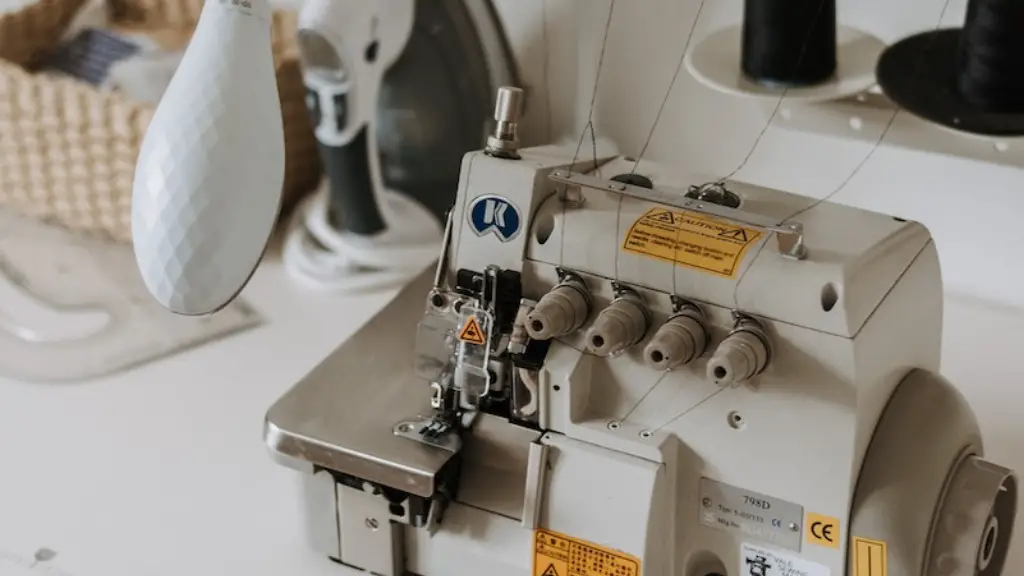The sewing machine has become an indispensable tool to many in the craft and fashion industry. But even the most skilled of seamstresses have to learn how to fix a broken foot on a sewing machine at some point. Fortunately, with the right tools and know-how, it is easy to replace or repair a sewing machine foot. Here’s how to do it.
Remove Any Fabric Remnants
If you can’t access the part you’re trying to repair, you’ll need to start by removing any fabric remnants that may be blocking the path. This is usually done by using tweezers or a flat head screwdriver, depending on the model of your sewing machine. Make sure to remove all pieces of fabric, thread, or any other debris from the area.
Disconnect the Power Source
Once the area is cleared, you’ll need to make sure that the power source, or machine foot controller, is disconnected. This is essential to make sure that you don’t get shocked or hurt if you accidentally touch any of the moving parts. Also, make sure each part is securely put back in place once it is removed.
Disassemble the Foot
Now that you have the power source disconnected, you can start disassembling the foot. Depending on your model, this is typically done by unscrewing or manipulating the screws on the foot. A screwdriver might be necessary for certain models, but many are designed with the screws embedded in the foot itself and don’t require a tool to remove them.
Inspect the Components
Once the foot is disassembled, use this opportunity to inspect each of the components. Worn or damaged parts should be replaced, and screws should be lubricated to ensure smooth operation. Keep in mind, however, that if you’re replacing any parts, make sure that they are the same make and model as the originals.
Reassemble the Foot
Once you’ve inspected and replaced any worn or damaged parts, it’s time to reassemble the foot. If a screwdriver was necessary to remove the parts, make sure to use one when putting them back together. If the screws are embedded in the foot, make sure they are properly adjusted and don’t over-tighten them.
Test the Foot
Once you have reassembled the foot, you can now test it to make sure it is working properly. Start by plugging the power source back in and turning on the machine. You should hear a clicking sound as the foot moves up and down on the arm, indicating that the machine is functioning properly. Finally, try sewing a few stitches on a piece of scrap fabric to make sure the thread is feeding correctly.
Examine for Leaks
Before using the machine for a project, make sure to examine the foot for any leaks or loose parts. This is best done by listening for any hissing sounds coming from the foot. You should also feel around the foot and check to see if there any areas that might be loose.
Caring For Your Sewing Machine
It’s important to care for your sewing machine to ensure it runs properly and lasts a long time. Doing so on a regular basis will help to prevent the need for busy repairs. Regular maintenance includes things like cleaning the machine with compressed air, lubricating the parts, and checking for loose bolts and screws. Your sewing machine manual should include specific instructions on how to care for your machine.
How To Adjust The Needle Height
If you’re having trouble with the stitches, there are steps you can take to make sure your stitching is even and consistent. One of the most important adjustments you can make is to the needle height. This can be done by loosening the screw on the machine foot and raising or lowering the needle. Once it is in the right place, you can re-tighten the screw and start stitching!
Perform Regular Checks
Performing regular checks on the foot of your sewing machine is essential in order to detect any damage or wear and tear. Regular checks should be done to ensure that the foot is clean, lubricated, and all screws tight. You should also check for any evidence of corrosion and make sure the foot is functioning as expected. Signs that indicate it may be time for a replacement or repair include difficulty or inconsistencies in stitching or threading, or an unusually loud noise coming from the machine.
Correct Storage and Transportation
When transporting or storing your sewing machine, make sure to always carry it in its original box or a special carrying case. This ensures that the foot will stay safe and secure during transit and will also help to protect the foot from any unexpected external damage. If a box or case isn’t available, you should take extra care when moving the machine and make sure to use multiple layers of bubble wrap to protect it.
Utilize Professional Services
Finally, if your attempts at fixing the foot on your sewing machine are unsuccessful, it may be a good idea to seek out the help of a professional. Many sewing machine repair shops provide service and can help to diagnose and repair any problems you may be experiencing. They also often carry replacement parts and can provide advice on where to find the right parts for your machine.



